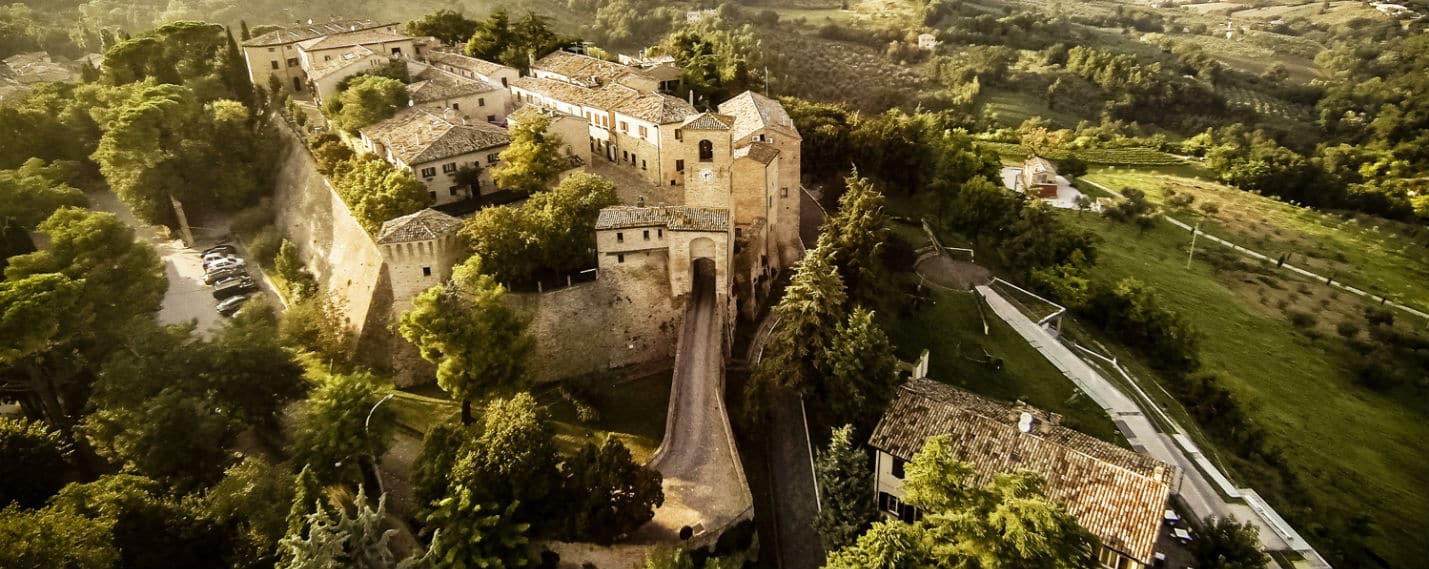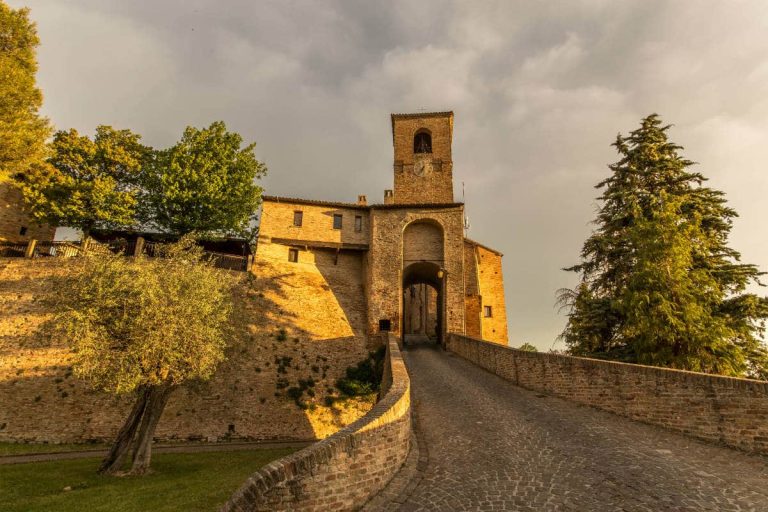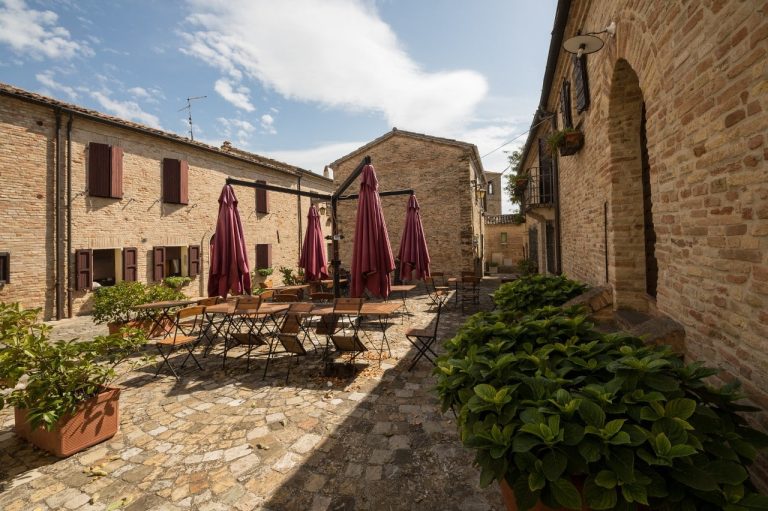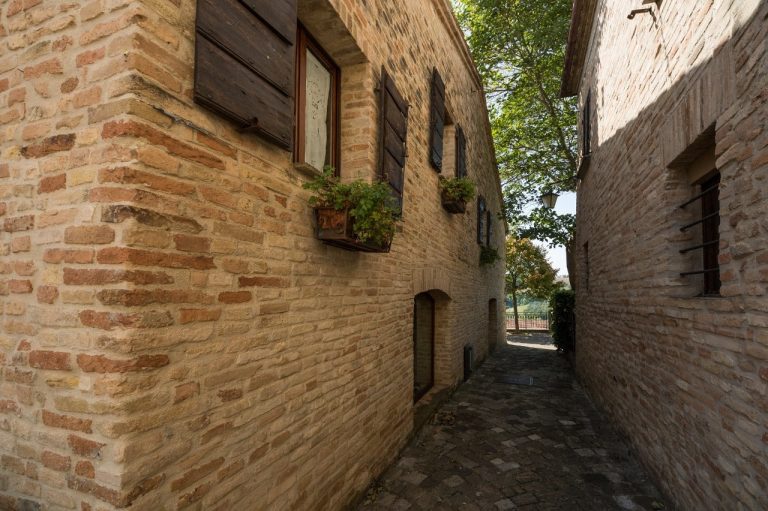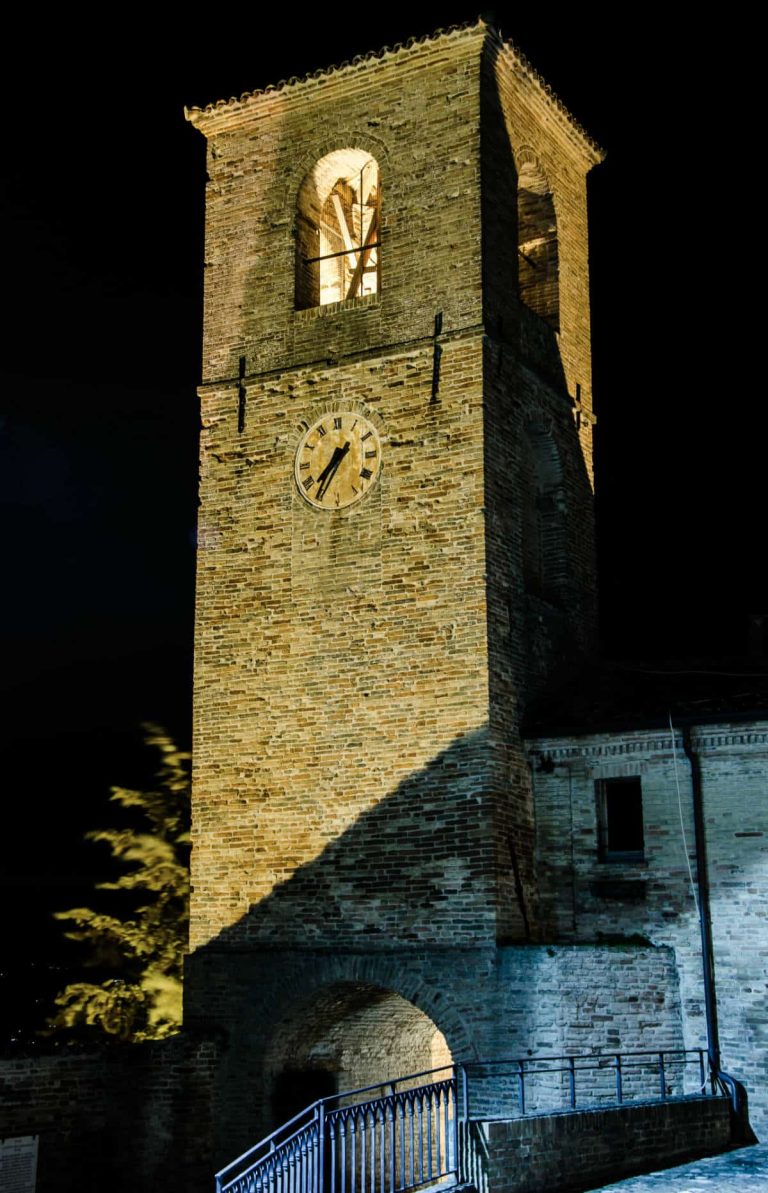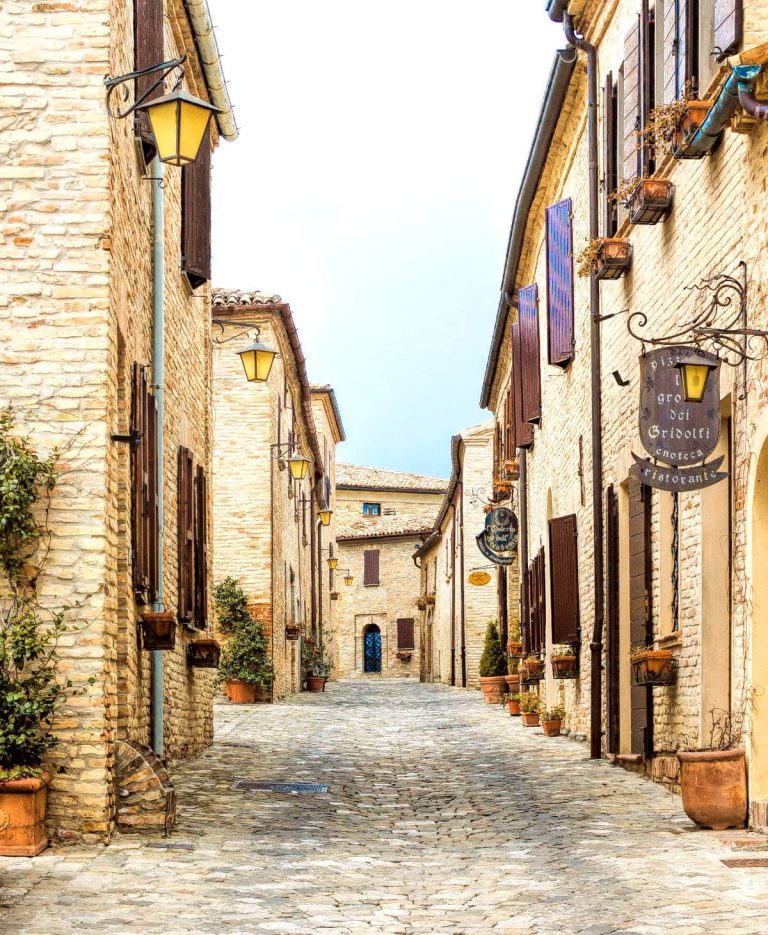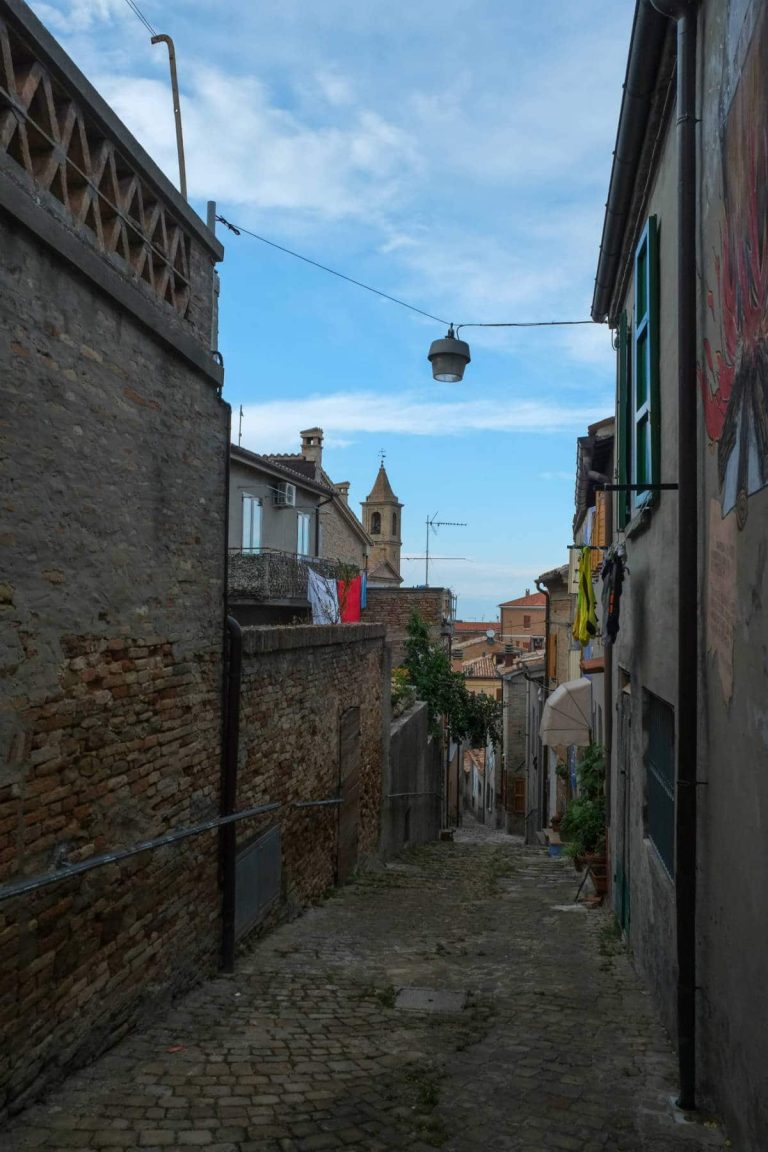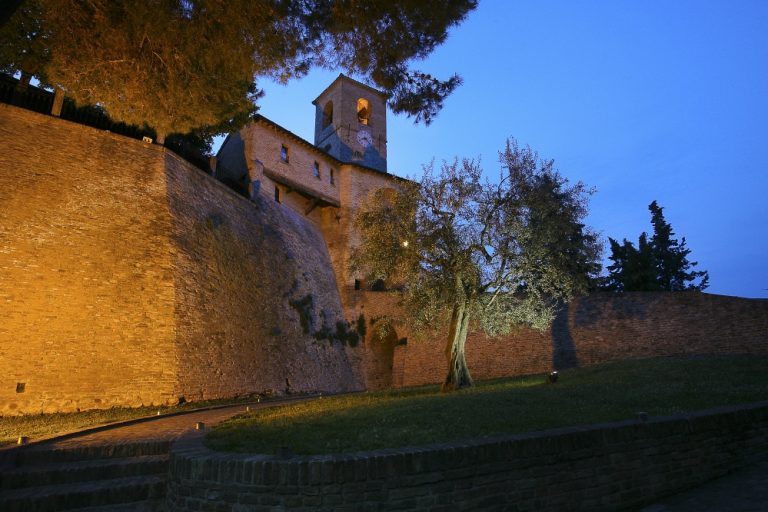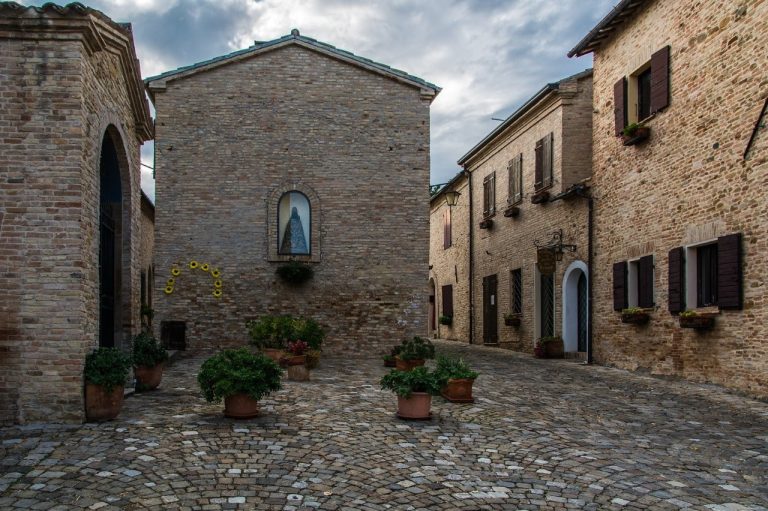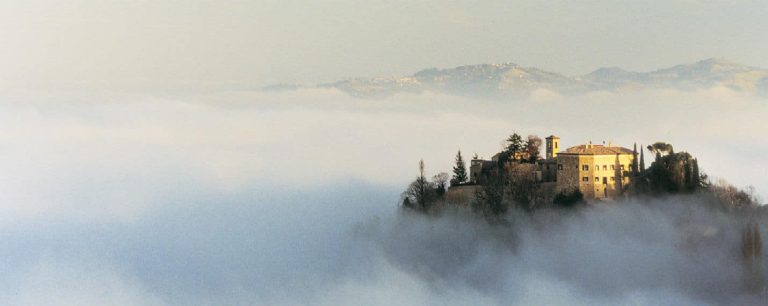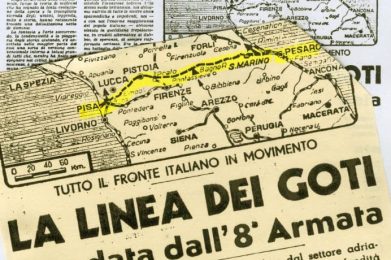An ancient name, a thousand-year history
Once known as Monte Lauro, because of the numerous laurels that covered the hill, the present toponym of Montegridolfo may derive from the Germanic Hrodulfus (or Ridulfus), indicating a "barren" place, typical of early medieval rustic toponymy. The first documented mention of the village dates from 1148, but its origins go back centuries, when it was part of the possessions of the Abbey of St. Peter of Rimini.
Situated in a strategic position between the seignories of the Malatesta and Montefeltro, Montegridolfo was repeatedly at the center of disputes and devastation: in 1336 it was destroyed by Ferrantino Novello, an ally of the Montefeltro and relative of the Malatesta. Rebuilt with more solid walls and four towers, the village then followed the events of the Renaissance, passing under Cesare Borgia, Venice and finally the Papal State.
Memoirs of war and rebirth
During World War II, Montegridolfo was a focal point of the Gothic Line, the German defensive line that cut Italy in two. The clashes of 1944 caused serious damage to the village, which remained scarred until the 1980s, when an ambitious restoration - also promoted by fashion designer Alberta Ferretti - began its architectural and tourist recovery.
Today Montegridolfo looks like an authentic fortified keep: a compact, rectangular urban layout, still protected by medieval walls and accessible through a characteristic tower with a clock. The village is an open-air museum, where every brick detail speaks of history.
The beating heart of the village is Palazzo Viviani, an aristocratic residence that is now the center of an albergo diffuso, combining hospitality and period charm. All around, charming alleys branch off, cosy little squares, cozy inns and glimpses of enchanting landscapes.
Among the main buildings: the Malatesta Castle (14th century), now the town hall; the Church of San Rocco (1427), with works by Guido Cagnacci and 15th-century frescoes; and the Church of San Pietro, rebuilt in 1929 with a 15th-century fresco of Christ Crucified; the Sanctuary of the Blessed Virgin of Grace in the hamlet of Trebbio, with a valuable painting by Pompeo Morganti; the Museum of the Gothic Line, which preserves relics and evidence of the war and allows visits to two civilian shelters excavated in 1944.
What to do in Montegridolfo, season by season
-Spring: A motorcycle route through the lands of the Malatesta and Montefeltro families or a rejuvenating walk in the green hills are the best way to discover the area.
-Summer: Ideal for a romantic evening among the village's illuminated streets, Montegridolfo hosts events and concerts such as Un Castello di Voci, an opera music review with an international scope.
-Autumn: Following the Strada dei Vini e dei Sapori dei Colli di Rimini, the village becomes the perfect destination for lovers of food and wine and landscapes that look like something out of a Piero della Francesca painting.
-Winter: On the second Sunday in December, the local olive oil is celebrated. And a few kilometers away, the castle of Gradara tells the eternal story of Paolo and Francesca, for lovers of Dante and poetry.
Traditions and events
Events not to be missed include the Living Stations of the Cross on Good Friday, with costumed figures parading through the streets of the village, and the Outdoor Art Exhibitions during the summer, which transform Montegridolfo into an open-air gallery.
Montegridolfo: an authentic refuge
Montegridolfo is not just a place to visit, but to experience. Every stone tells a story, every sunset on the hills brings with it the charm of a suspended time. Here tourism is slow, conscious, intimate. Ideal for those seeking beauty, silence and memory.

